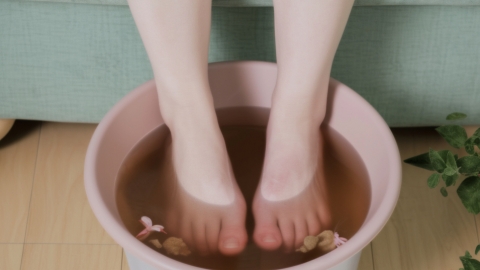Can I use artemisia leaf foot baths during the recovery period of cerebral hemorrhage?
Generally, it is not recommended for patients in the recovery phase of cerebral hemorrhage to soak their feet in mugwort. The detailed explanation is as follows:

Mugwort has functions of warming the meridians to stop bleeding, dispersing cold to relieve pain, and promoting blood circulation to remove blood stasis. It is commonly used to improve blood circulation, alleviate fatigue, and enhance sleep. However, for patients recovering from cerebral hemorrhage, these effects of mugwort may pose risks. Cerebral hemorrhage is a severe hemorrhagic disease, and during the recovery phase, patients must pay special attention to changes in vital signs such as blood pressure and heart rate, as well as avoid any factors that might trigger re-bleeding.
Soaking feet in mugwort may promote blood circulation, potentially leading to elevated blood pressure and increased heart rate. This is undesirable for patients recovering from cerebral hemorrhage, as increased blood pressure and heart rate could raise the risk of re-bleeding. Additionally, if cerebral hemorrhage patients have limb paralysis or sensory impairment, they may be unable to accurately perceive the water temperature while soaking their feet, thus increasing the risk of burns.
To ensure safe and effective rehabilitation, patients recovering from cerebral hemorrhage should avoid soaking their feet in mugwort. Patients may choose passive massage or sponge baths to maintain body cleanliness and comfort, while avoiding additional burdens on the skin. Furthermore, active rehabilitation exercises should be conducted under a doctor's guidance to promote physical recovery and improve quality of life.







